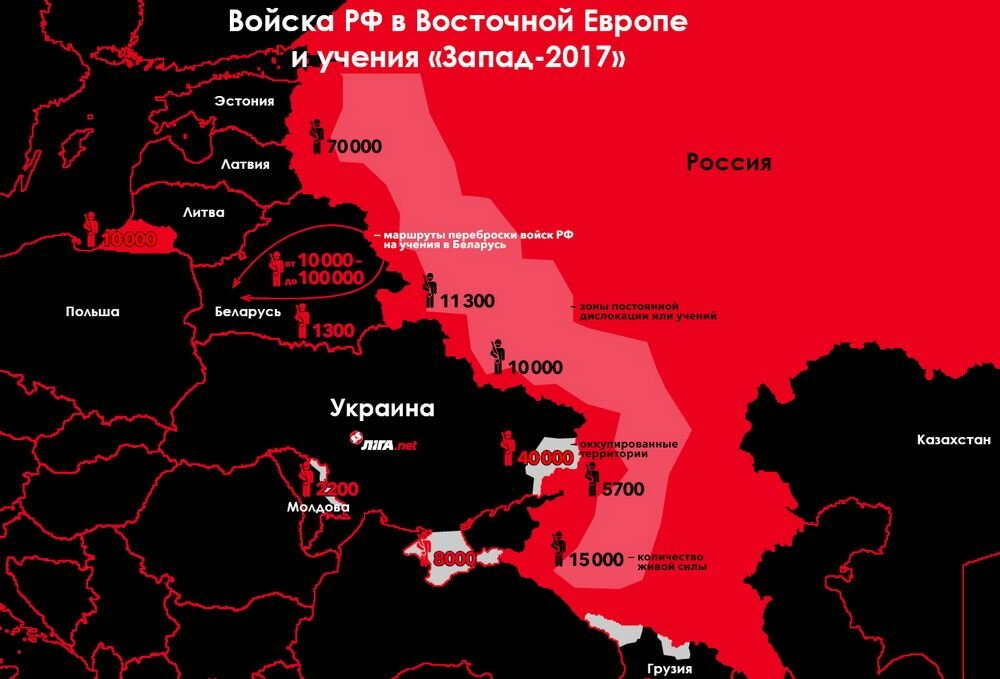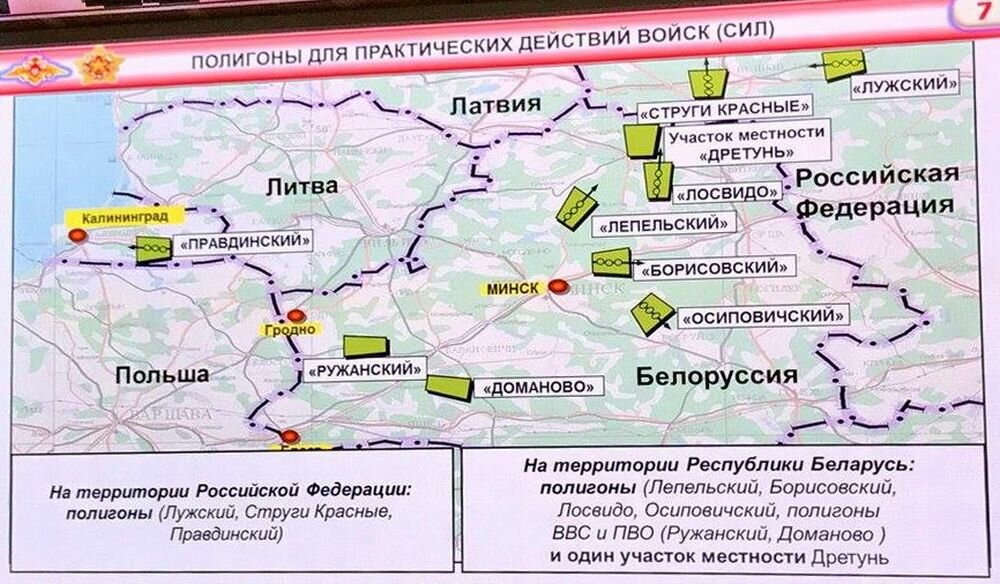
Yuriy Radkovets
Among the Russian Federation's routine and planned events of military-political and military-strategic nature, today the greatest attention of both Western and domestic expert environments is drawn to the military-political forums (conferences, seminars, games involving the top military-political leadership of the country), and to the RF Armed Forces' SCPEs (training of the highest level strategic and operational command including sudden inspections).
To date, strategic command post exercises (SCPE) alternately (once in four years) are conducted within the military-administrative boundaries of the military districts of the Armed Forces of the Russian Federation (Southern, Western, Central, Eastern, and the Arctic region), which, during the escalation of a military threat and in war time turn into the Joint Strategic Commands (JSC) of the RF Armed Forces “South”, “West”, “Center”, “East” and “North”, respectively.
As a rule, each such SCPE in the year of its conducting, is preceded by one or two large-scale sudden inspections of the combat readiness of the staffs and troops of a certain military district, with a wide range of activities such as: deployment of field command offices (control posts and communication centers) in the areas of operational assignment of the troops; reinforcement of the grouping of troops with personnel and equipment, including from other military districts (in a combined way, over long distances); mastering possible scenarios for the use of a joint grouping of troops (forces) and conducting military operations on one or two strategic directions, including against NATO troops (forces).
The RF Armed Forces' SCPE “West-2017” is scheduled for September 14–20, 2017. According to the plans for operational and combat training of the Armed Forces of the Russian Federation, such SCPEs are conducted every four years within the military-administrative borders of the Western Military District (Joint Strategic Command /JSC/) of the RF Armed Forces.
According to the official statement by the General Staff of the Armed Forces of the Russian Federation, during the “West-2017” SCPE it is planned to conduct:
- practical verification and clarification of the Plan of Strategic Use of the RF Armed Forces in the Western Strategic Direction;
- assessment of mobilization resources and the state of mobilization readiness of the economy, transport and the public administration system of the Russian Federation to function in a special period and in war time conditions.
At this, according to the unveiled Russia's top military and political leadership's plan, during the “West-2017” SCPE, they are supposed to master possible scenarios of countering as follows:
- The US/NATO coalition troops (forces)' actions to block the Kaliningrad enclave and capture it;
- An attempt of de-occupation of the Crimea and/or of the ORDLO of Ukraine, with the support of Western allies;
- Attempts to change the political regime in one of the Russian Federation's friaendly states.
 Besides, within the framework of an operational cover for the true aims and scope and the real nature of the tasks to be mastered during the “West-2017” SCPE, they planned a joint strategic Russian-Belarusian exercise (of the Union State of Russia and Belarus) with an identical conventional name “West-2017” in the territory of Belarus.
Besides, within the framework of an operational cover for the true aims and scope and the real nature of the tasks to be mastered during the “West-2017” SCPE, they planned a joint strategic Russian-Belarusian exercise (of the Union State of Russia and Belarus) with an identical conventional name “West-2017” in the territory of Belarus.
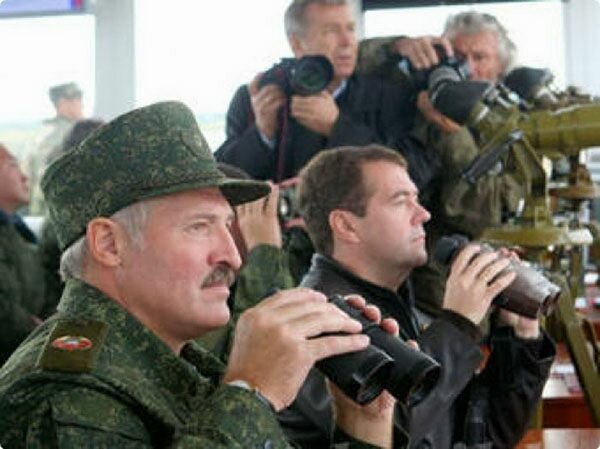 Russian-Belarusian exercises like “West-2017” are conducted every two years in Russia and Belarus. They began in 2009, when the Presidents of the two countries, D. Medvedev and A. Lukashenko, attended the first such event and decided to make the maneuvers regular.
Russian-Belarusian exercises like “West-2017” are conducted every two years in Russia and Belarus. They began in 2009, when the Presidents of the two countries, D. Medvedev and A. Lukashenko, attended the first such event and decided to make the maneuvers regular.
In September 2017, the practical part of the exercise will be conducted in Belarus at six training fields: Lepel, Borisov, Losvido, Osipovichi, at the airfields of the Air Force and Air Defense Forces of Ruzhansky and Domanovo, and “…on the terrain in the republic near the settlements of Dretun and Glubokoe”.
Up to 12,700 military servicemen are planned to participate in this exercise, of whom in the territory of Belarus — approximately 10,200 (7,200 from the Armed Forces of Belarus and more than 3,000 from the Armed Forces of the Russian Federation). Up to 680 units of military equipment will be involved.
Such a number does not require notification to international organizations, but the participants of the exercise plan to invite military attaches accredited to the Ministry of Defense of Belarus, as well as representatives of the UN, OSCE, NATO, Collective Security Treaty Organization, CIS and the International Committee of the Red Cross. In total, more than 80 observers will be invited, including from Ukraine, Poland, Lithuania, Latvia, Estonia, Sweden and Norway.
The military servicemen of the Armed Forces of the Russian Federation engaged in the preparation of the Russian-Belarussian exercise “West-2017” began to arrive in Belarus in June 2017.
The RF Armed Force's “West-2017” SCPE will differ from the previous “West-2013” SCPE by a much larger spatial scale and the number of personnel and combat equipment involved.
For example, the “West-2017” SCPE is supposed to be conducted actually throughout the European part of the Russian Federation (within the military-administrative borders of the JSCs “South”, “West” and “North” of the RF Armed Forces), in the occupied Ukrainian Crimea and along the borders of Ukraine, in particular — on Mariupol, Donetsk, Slobozhanshchina and Polissya directions, in Belarus, as well as in the Black, Mediterranean and Baltic seas.
Apart from the Russian Armed Forces, in the exercise will also participate federal, regional and local structures of governance, units of the Federal Service of the National Guard (“Rosgvardia”), the Ministry of Internal Affairs, the Federal Security Service, the Ministry for Emergency Situations, representative offices of the RF Defense Industry Complex, etc.
At the same time, the actual number of participants in all events within the framework of the “West-2017” SCPE is estimated by military specialists and experts at 230–240 thousand people, more than 10 thousand units of combat equipment, about 100 aircrafts and about 40 ships/submarines of different classes.
That is, taking into account the specifics of the current military-political situation around the Russian Federation, especially in the context of further aggravation of its confrontation with the United States, NATO and the EU, the “West-2017” SCPE has a geostrategic goal, namely, to demonstrate Russia's military power to the United States and Europe, as well as its readiness to use it.
 The actual “rehearsal” of the “West-2017” SCPE, which reveals the true meaning of its scenario, was the comprehensive inspection of the RF Armed Forces for the winter period of the exercise in March–April 2017.
The actual “rehearsal” of the “West-2017” SCPE, which reveals the true meaning of its scenario, was the comprehensive inspection of the RF Armed Forces for the winter period of the exercise in March–April 2017.
Based on the analysis of the operational and combat training activities of the Russian Armed Forces that were conducted during this comprehensive inspection, in the course of the “West-2017” SCPE it is planned to master organizing and conducting an offensive operation on the Western strategic direction, as well as defensive operations on other strategic directions.
In particular, most illustrative was the joint training of battalion tactical groups from the 106th Airborne Division (HQ — in Tula) of the RF Armed Forces and 103rd Separate Airborne Brigade of the Belarusian Special Operations Forces in April 2017 in Vitebsk region of Belarus. They mastered reconnaissance and search operations to the depth of 100 km in order to determine the main routes for main forces, as well as capturing and defending forward areas.
During the same period, a number of trainings were conducted by the Baltic Fleet (BF) of the Russian Federation to land an assault by the forces of the 336th Marine Brigade (Baltiysk, Kaliningrad Region) of the Baltic Fleet and strikes against enemy targets by missile ships, submarines and naval aviation.
Besides, in the trainings participated groups and units of the 1st Tank Army (HQ — in Naro-Fominsk, Moscow region) and the 20th Combined Arms Army (HQ — in Voronezh), as well as of the 6th Combined Arms Army (HQ — in St. Petersburg) and the 1st Air Force and Air Defense Army (HQ — in St. Petersburg) of Russia's VKS.
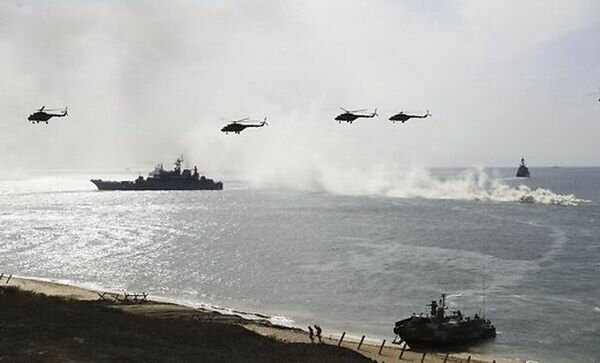 At the same time, within the framework of the comprehensive inspection elements of a defensive operation on the South-Western (Black Sea) strategic direction were mastered.
At the same time, within the framework of the comprehensive inspection elements of a defensive operation on the South-Western (Black Sea) strategic direction were mastered.
The main of such events were conducted in the Crimea and included joint trainings of Battalion Tactical Groups of the 7th Airborne Assault Division (HQ — in Novorossiysk), (Kamyshin) and 11th (Ulan-Ude) Air Assault Brigades as well as the training of the 126th Separate Coastal Defense Brigade of the Russian Black Sea Fleet.
During these events, the following tasks were accomplished: creation of a rapid reaction grouping to strengthen the Russian Armed Forces in the Crimea; counterlanding defense in cooperation with the Black Sea Fleet; destruction of the enemy in the interior of the Crimea with the support of tactical and army aviation; antisabotage actions and taking control of important facilities.
Some aspects of the defensive operation were also worked out during the trainings of the ships and naval aviation of the Black Sea Fleet of the Russian Federation, as well as of units of the 49th (HQ — in Stavropol) and 58th (HQ — in Vladikavkaz) Combined Arms Armies of the Southern Military District and of the 4th Air Force and Air Defense Army (HQ — in Rostov-on-Don) of the VKS of the Russian Armed Forces.
Against this background, during the trainings of the 14th Air Force and Air Defense Army (HQ — in Yekaterinburg, subordinated to the Central Military District) in February this year, they were mastering strengthening air groupings of Russia's Air Space (VKS) Forces on the Western and South-Western strategic directions.
Taking into consideration the above mentioned circumstances, on the main — Western strategic direction, in the “West-2017” SCPE will be involved forces from the Western Military District of the RF Armed Forces, as well as some units from other districts and branches of the RF AF.
Thus, the main participants in the exercise should be the 1st Tank Army, the 6th and 20th Combined Arms Armies, the 6th Air Force and Air Defense Army, units of the 76th Airborne Assault (HQ — in Pskov), the 98th and 106th Airborne Divisions, as well as the forces of the Baltic and Northern Fleets (including the newly created 11th and 14th Army Corps of the RF Coastal Forces respectively). In addition, the Armed Forces of Belarus will take part in the exercise.
In turn, in mastering the defensive operation on the South-Western (Ukrainian and Black Sea) strategic directions, will participate the forces of the 8th and 49th Combined Arms Armies of the Southern Military District, the grouping of Russian troops in the occupied Crimea, units of the 7th Airborne Assault Division, 21st and 56th Airborne Assault Brigades, as well as the 6th Air Force and Air Defense Army and the Russian Black Sea Fleet. The 8th Combined Arms Army (HQ — Rostov-on-Don), which was created in 2017 on the Ukrainian direction (including the newly created 150th Motorized Rifle Division (HQ — Novocherkassk) and the 20th Separate Motorized Rifle Brigade (HQ — Volgograd, transferred from the 49th Combined Arms Army), will participate in the exercise for the first time.
In the exercise will also take part the units of other law enforcement agencies of Russia, including FSB, Rosgvardia, the Ministry of Emergency Situations, the Ministry of Internal Affairs, the Federal Agency for Government Communications, and so on.
Since early August 2017, redeployment and concentration of Russian troops (including the 1st Tank Army) began in the areas where the main activities of the “West-2017” SCPE are planned to take place. We can't ignore the fact, that compared to 2015, the volume of traffic to Belarus will grow 33 times, and compared to 2016 — 83 fold. All in all, 4162 wagons with military cargoes should arrive from Russia to Belarus in 2017.
This causes Western military experts' not unfounded concern in the context of the fact that after the exercises Russia can leave the armament and military equipment on the territory of Belarus (on the eastern borders of NATO) on a permanent or rotational basis. And this, accordingly, will lead to a threatening build-up of the military infrastructure of the Russian Federation on the borders with NATO countries.
The concentration of Russian troops, including tank, motorized rifle and artillery units and subunits, is also noted near the borders of Ukraine, including in eastern districts of Voronezh and Rostov regions of the Russian Federation.

|
The planned preparation of the “West-2017” SCPE was carried out in the last days of August 2017. During that period they ortganized special joint trainings with military command, control and communication agencies, formations and organizations of logistics support of the Armed Forces of Russia and Belarus. They mastered technical protection of facilities and certain sections of roads, evacuation, repair and restoration of broken equipment and armament, deployment of a field trunk pipeline, and of places for mass refueling of vehicles.
Besides, within the framework of the preparation of the “West-2017” SCPE, many separate operational and combat trainings were conducted in Belarus, including: the Russian-Belarusian training of radio electronic reconnaissance and electronic warfare units (up to 1,500 servicemen and 150 pieces of military equipment); Russian-Belarusian-Serbian exercise “Slavic Brotherhood” (more than 1 thousand military personnel and 150 units of military equipment); joint maneuvers of the Separate Engineer Battalion of the 1st Tank Army of the RF Armed Forces and the 188th Engineer Brigade of the Armed Forces of Belarus in mid-July of 2017; joint tactical and special exercise of units of Signal Communications Troops of Russia and Belarus.
According to Russian Defense Minister S. Shoigu, the “West-2017” SCPE will be preceded by a comprehensive mobilization training, during which they will master switching federal and regional executive authorities, as well as enterprises of the defense industry to work in war time conditions.
Judging from the experience of the previous SCPEs of the RF Armed Forces, on the eve of the active phase of the exercise (10–14 days before it), a “sudden inspection ” of the combat readiness of the staffs and troops of the Western and other military districts of the Russian Armed Forces can take place, with mastering raising the units and formations for combat alert, and bringing them to the areas of conducting the “West-2017” SCPE by their own motion, by air and by sea.

|
It is also worth noting that the preparation of the “West-2017” SCPE is being carried out in the situation of another aggravation of Russian-American relations as a result of the introduction by the USA in August of this year of a new package of sanctions (of a critical nature) against Russia. In this regard, the “West-2017” SCPE is, in fact, used by Moscow as an impudent means of exerting pressure on the USA and its European allies.
At this, under certain circumstances, the continuation of the “West-2017” can be Russia's aggression against Poland and the Baltic states or a full scale invasion of Ukraine with the goal of creating a land corridor to Trans-Dniester and the Crimea and, as a maximum, final resolving of the “Ukrainian issue ” in Moscow's favor. In particular, the armed conflict in the Asia-Pacific region between the United States and North Korea, with China interfering in it, may be a catalyst for this, as it would distract the attention of the world community from European problems.
Evidence of the real possibility of such actions by Moscow is the previous experience of the “Kavkaz-2008” SCPE, after which Russia attacked Georgia, as well as the “West-2013”, which preceded Russia's armed aggression against Ukraine. In this context, such SCPEs actually act as a kind of rehearsal for such adventures.
Besides, Russia continues to take large-scale measures to strengthen the combat potential of the Western and Southern Military Districts by re-equipping their formations and units with new types of weapons and military equipment.
For example, since the beginning of this year, more than 500 pieces of modern military equipment, including tanks, missile-artillery systems, multi-functional Su-30SM fighters and vehicles for various purposes, have been delivered to the troops of the Western Military District. A significant amount of military equipment was received by the troops of the Southern Military District, including more than 160 tanks, infantry fighting vehicles and armored personnel carriers. By the end of this year, the Southern Military District should receive more than 1.8 thousand pieces weapons, including 900 armored vehicles.
Rather revealing is also the beginning of the formation of attack forces units of the Armed Forces of the Russian Federation, fully manned and equipped for war time. In particular, in the 76th Airborne Assault Division the Armed Forces of the Russian Federation, a Regimental (based on the 104th Airborne Assault Regiment) and Battalion (part of the 234th Airborne Assault Regiment) Attack Tactical Groups were created. A Separate Airborne Assault Battalion of the 7th Airborne Assault Devision is being created in the Crimea. The Battalion will be deployed near Feodosia and will go into combat service by December 1, 2017. On the basis of this Battalion, by the end of 2017, the 97th Airborne Assault Regiment will be deployed in the Crimea (the third in the composition of the 7th Airborne Assault Division).
Along with this, in the Ground Forces of the RF Armed Forces, is being created special task reconnaissance companies (the decision on the matter was taken in 2016). The task of these units is to search for certain objects in the enemy's rear with the subsequent transfer of their coordinates in the interests of the combat use of the “Iskander-M” missile system and the long-range multiple rocket launcher “Uragan”. Each combined arms and tank army is planned to have one of such companies. To date, the special task reconnaissance companies have already been formed in the 49th and 58th Combined Arms Armies of the Southern Military District of the RF Armed Forces.
Russia's above-mentioned actions cause significant concern to the leadership of NATO, the Baltic states and Poland, which are taking measures to prevent a possible aggression on the part of the Russian Federation.
Thus, within the framework of the series of the NATO' exercises, a preventive build-up of the NATO Response Forces (NRF) in the Baltic region was carried out, and were worked out the questions of repelling Russia's possible attack. In particular, the following things were mastered: establishing interaction between staffs at different levels; receiving NATO troops arriving by land, sea and air; conducting defensive and counteroffensive operations.
This resulted in the partial deployment of the NATO’s Multinational Corps (HQ — in Szczecin, Poland; including mechanized/motorized infantry divisions of Poland, Germany and Denmark) that forms the basis of the forces of the Joint Sub-Regional Command “North-East” of the NATO Regional Command “North” in Europe.
Besides, the strategic nuclear component of the US Armed Forces in Europe has been reinforced. In particular, in early June 2017, five B-52H and B-1B strategic bombers were redeployed by the US Air Force to the Fairford airbase in the UK. For the first time since the end of the Cold War, these aircrafts have begun flights over the Baltic Sea.

|
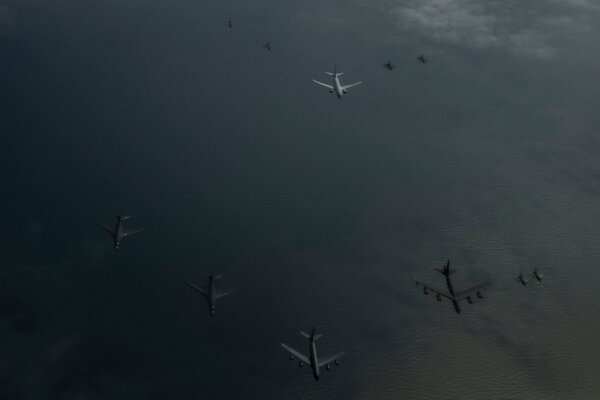
|
At the same time, in July 2017, in Lithuania, the US Air Force long-range air defence missile complex “Patriot” was temporarily deployed, and in August, seven F-15C Eagle fighters of the US Air Force were transferred to the airbase of Siauliai in Lithuania.
And for the period of the “West-2017” SCPE, in the Baltic region, it is planned to conduct a new series of the USA, NATO and their partners' exercises with participation of land, sea and air components. In particular, for September 2017 are scheduled joint exercises of the USA's and Finland's Navies off the coast of Sweden.
In general, these processes cause a significant growth of military tension in Central and Eastern Europe, the Baltic and Black Sea regions. This does not exclude the possibility of Russia's expanding the scale of its armed aggression against Ukraine, or the RF's attack on the Baltic states, which is likely to lead to an armed conflict between the Russian Federation and the USA/NATO.
Besides, it is extremely dangerous that Russia and the USA/NATO conduct simultaneous military events in the same regions, which increases the threat of provocative incidents and clashes (including with nuclear carriers) with unpredictable consequences.
The article was published in the edition of the Romanian Center “INGEPO Consulting Company” —
“Geostrategic Pulse” № 244 from September 20, 2017


